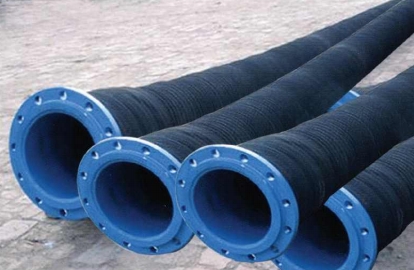

Buying rubber tubes is simple and complicated. I have seen many people buy one and use it casually, but the joints either leak or age and crack after two months of use. Today, let's talk about how to pick a suitable rubber hose.
First of all, you have to look at the purpose. For kitchen use, garden watering, car oil connection, industrial infusion, each scene has different requirements for rubber tubes. For example, the hoses used in kitchen dishwashers must be resistant to high temperatures and oil stains; while garden hoses pay more attention to flexibility and UV protection. Don't just use one hose to save trouble, that would be troublesome for yourself.
The material is the highlight. Natural rubber has good elasticity but is afraid of oil, synthetic rubber (such as nitrile rubber) is wear-resistant and corrosion-resistant, and silicone hoses are suitable for high temperature environments. Last year, my friend bought a low-quality hose for cheap, but it was deformed when connected to the water heater, and almost caused an accident. So you must read the material label clearly, don't just buy it because of the cheap price.
Size matching is often overlooked. If the inner diameter is too small, the water flow will not be smooth; if the inner diameter is too thick, it will be wasteful; if the wall thickness is not thick enough, the pipe will burst easily. Here is a trick: take the joint to the physical store to try it out, and measure the exact size when buying online. I have seen people force a 6-point pipe into a 4-point joint, and it leaks every other day.

The pressure bearing capacity directly determines the life span. 0.5MPa is enough for ordinary household use, but if it is a high-pressure cleaner or industrial use, it must be at least 1MPa. Note that the "bursting pressure" and "working pressure" marked by some merchants are not the same thing. The former is the limit value, and the latter is the standard for daily use.
Environmental adaptability is very important. In the north, you need to choose antifreeze, in the south, you need to choose anti-mildew, and for outdoor use, you need to protect against ultraviolet rays. There is a vegetable farmer in my hometown. The ordinary rubber tube he bought was placed in the greenhouse. It became brittle like biscuits in half a year. Later, it was replaced with an anti-aging tube with carbon black added to solve the problem.
Finally, let's talk about the brand and after-sales service. Although big brands are more expensive, the materials and quality inspection are more reliable. Don't underestimate the factory certificate and warranty period, they can really save you trouble at critical moments. Last year, my family replaced a certain brand of hose. After three years of use, there was a little leakage at the joint. I just called and got a new hose for free.
Remember, buying a rubber hose is not a one-time deal. Spending a few dozen dollars more to buy a good hose may be more cost-effective than replacing a low-quality hose every year. Next time you see those ridiculously cheap rubber tubes, be more careful!
As a professional manufacturer and supplier, we provide high-quality products. If you are interested in our products or have any questions, please feel free to contact us.